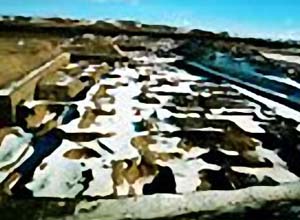| Legole.Com Discover china. Explore the beauty and wonder of the land, people, and culture of China. |
 |
|
|
 |
| |
 The Reign of Kublai Khan The Reign of Kublai Khan
As the ruler of North China Kublai Khan sought to enhance his position to that of the emperor of China. When he was proclaimed Khan in 1260 an edict written by his Confucian advisor contained a Chinese reign name. He had constructed a capital city at Kaiping in Inner Mongolia, later to be called Shangdu, the Supreme Capital. Then later on the site of modern Beijing he laid out Dadu, the Great Capital, also known as Khanbalik, the city of the khan. The court moved between Shangdu in summer to Dadu in winter. Under Kublai Khan the idea of a universal empire began to disintegrate. This was typified by the lack of success in his efforts to subdue the Japanese. Even the elements acted against him and his fleet was destroyed by a kamikaze or 'divine wind'. Further disasters were to follow late in his reign when he tried to coerce the rulers of Champa (in modern Vietnam) and Java.
From 1260 Kublai had begun to use the administrative traditions of China. He took as his adviser a Buddhist monk called Liu Bingzhong. It was he who gave the Khan the advice 'although the empire had been conquered on horseback, it could not be administered on horseback'. He re-established the secretariat and the six ministries. The division of civil, military and censorial branches of government was retained. Territorial administration was organized so that China and Korea formed twelve provinces. This was much along the same lines as had been the Chinese imperial practice but with much more delegation of authority.
Chinese court ceremonial and Confucian rites were adopted and in the early 1260's a national history office was set up to collect the records of the preceding dynasties. In 1271 Kublai decided to adopt a Chinese dynastic title, that of Da Yuan or 'Great Origin'. Kublai began to show an unwillingness to accept certain fundamentals and the first to suffer was the examination system. Once again, the bureaucracy was to be recruited from people with the 'right family background' or whose family was already employed in the civil service. Many came from non-Chinese backgrounds and included Uigur and Turks. Unlike the Mongols, the Chinese had never held the military in very high esteem. This was another aspect which brought about change, as the Khan maintained the hereditary system of appointments to positions within the army. Finally, there was the legal system. The code established by the Tang had continued to be used by the Song but the Yuan dynasty was to try and rule by a collection of rules laid down by Genghis Khan known as the jasagh. It proved difficult to apply such a code to the multi-cultural society of China.
However, in 1323 a set of legal documents was compiled with a view to creating a balance between Chinese tradition, Mongolian practice and the new social conditions. Nevertheless, neither the Chinese nor the Mongols would fully accept the legal code of the other.
The Successors of Kublai Khan
The closing years of his reign were marred by the failure of his foreign enterprises, ill health and the problem of the succession. Unlike the Chinese tradition of the emperor nominating his successor, the Mongols had a custom whereby a ruler was publicly acclaimed from a group of eligible contestants. This gave rise to difficulties throughout the Yuan period and this weakened the dynasty. The original choice of successor was Kublai's son Zhenjin but he died in 1285. After Kublai's death Zhenjin's son reigned as Emperor Chengzong from 1294 until 1307. By and large he continued the policies of his late grandfather. Soon there was the onset of administrative inefficiency and corruption. The next to reign was Khaishan, known as Wuzong, who rejected much of Kublai's programme. He ran into debt and used a variety of bad financial practices in order to reverse his plight.
Next in line was Emperor Renzong (1311-1320). More than any other, Renzong absorbed the Chinese culture. Employing Confucian scholar-officials and by partly reviving the examination system, he created some reforms. This was unpopular with the Mongolian elite although no more than four percent of officials were ultimately appointed by examination.
Following the death of Renzong there was much antagonism between the various factions at the court. In 1323 a coup placed Yesun Temur on the throne. He was unsympathetic to Chinese officials and appointed many Muslims to senior positions. When he died in 1328 a vicious succession struggle ended with Togh Temir being enthroned twice. Unlike his predecessor, he was more devoted to China than the steppe and adopted Confucian ideals and promoted Chinese culture. Finally, Toghon Temur succeeded at the tender age of thirteen. He reigned until 1368 when the Mongol court fled from China.
|
|
|
 |
|
|
 |
|
